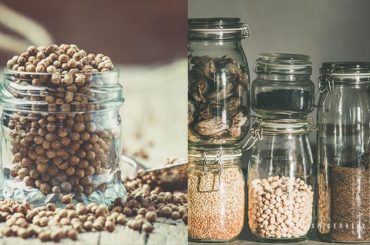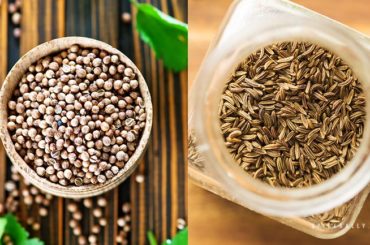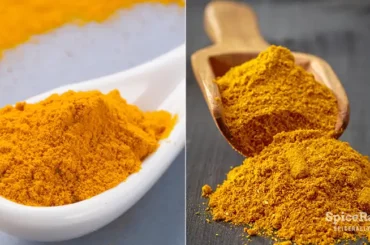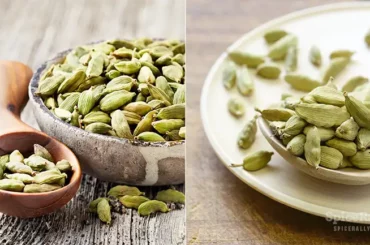Cinnamon in cinnamon rolls and nutmeg in eggnog- both of these spices remind us of the warmth and delicious taste of seasonal goodies. So, let’s check out what we should know about nutmeg vs cinnamon.
Cinnamon comes from the inner bark of various tree species from the genus Cinnamomum. On the contrary, nutmeg is basically the seed of the Myristica fragrans tree. In general, all types of cinnamon have a sweeter, woodsy, and warm undertone, while nutmeg is nuttier, almost spicy, and warm with a sweet aftertaste. They also have different appearances and aromas and are applied differently in cooking.
So, let’s take a comprehensive look into these two spices and how they distinguish them from one another.
The difference between “Nutmeg” & “Cinnamon” – SpiceRally DrillDown ~
| Nutmeg | Cinnamon | |
|---|---|---|
| Flavor profile | Nutty, warm, earthy, slightly woody, astringent, and leaves a sweet aftertaste. | Cassia cinnamon is more intense in flavor than nutmeg, with a more bitter, spicy, peppery, and slightly sweet undertone. But Ceylon cinnamon has a more subdued note with a warm, sweeter, earthy, and woody hint. |
| Aroma profile | Nutmeg has a stronger fragrance than cinnamon. It has a spicy sweet element with earthy and pungent base notes. | Both cassia and Ceylon cinnamon have a less intense aroma than that of nutmeg. Cinnamon generally has almost a woody, earthy, slightly sweet, peppery smell. |
| Base flavor | Warm and spicy | Warm and spicy |
| Appearance | Whole nutmeg comes in an ovular shape and dark brown exterior, while ground nutmeg is identified for its reddish-brown color and powdery consistency. | Cinnamon quills are long and cylindrical, while powdered cinnamon often ranges from light to deep brown. |
| Forms used | – Whole seeds – Ground nutmeg – Essential oil | – Quills – Pieces – Powdered cinnamon – Essential oil – Capsules |
| Availability | Widely available in supermarkets, grocery stores, or online shopping sites. | Cassia cinnamon is widely available in supermarkets, grocery stores, or online shopping sites. But Ceylon cinnamon can be rare and more expensive. |
Click on this link to discover more substitutes for cinnamon.
| Purpose in cooking | As an ingredient, condiment | As an ingredient, condiment |
| Usage in cooking | – Pairs well with creamy sauces and cheesy dishes. – Complements root vegetable dishes. – Widely used to flavor seasonal beverages, sweet dishes, and baked goods. – Adds a depth of flavor to rich meat and seafood dishes. – Added to spice rubs and incorporated into marinades. | – Widely used as a baking spice and flavors sweets and beverages. – Used as a herbal tea with or without black tea infusion. – Commonly used with many spice blends, seasoning mixtures, spice rubs, and marinades. – Added to soups, stews, and broths. Used to flavor meat, fish, seafood, and vegetable curries. |
| General use | – Used in cooking and baking – Beneficial in aromatherapy and haircare. – Used in folk medicine. | – Used in cooking and baking. – Incorporated into modern pharmacology and folk medicine. – Beneficial in aromatherapy and skin care. – Used in household remedies. |
| Storage | Store ground nutmeg in an air-tight jar/ container away from light, heat, and moisture. When stored properly, ground nutmeg will remain fresh for about six months. The whole nutmeg seeds will stay fresh longer than ground nutmeg. | Store ground cinnamon in an air-tight jar/ container away from light, heat, and moisture. When stored properly, ground cinnamon will maintain its freshness for about 3-4 years. Cinnamon quills will stay flavorful longer than ground cinnamon. |
| Health benefits | – Strengthen the cognitive function – Detoxify the body – Increase immune system function – Soothes indigestion – Alleviates oral conditions | – Aids in weight loss and obesity – Controls higher blood sugar levels and prevents diabetes – Could protect against heart disease – May have beneficial effects on neurodegenerative diseases – Reduces inflammation in the body |
| Scientific name | Myristica fragrans | – Cinnamomum Verum – Cinnamomum Burmannii – Cinnamomum cassia – Cinnamomum loureiroi |
| Active compounds | Myristicin | cinnamaldehyde |
| Plant family | Myristicaceae | Lauraceae |
| Origin | Indonesia | Sri Lanka, Southern China, Indonesia, and Vietnam. |
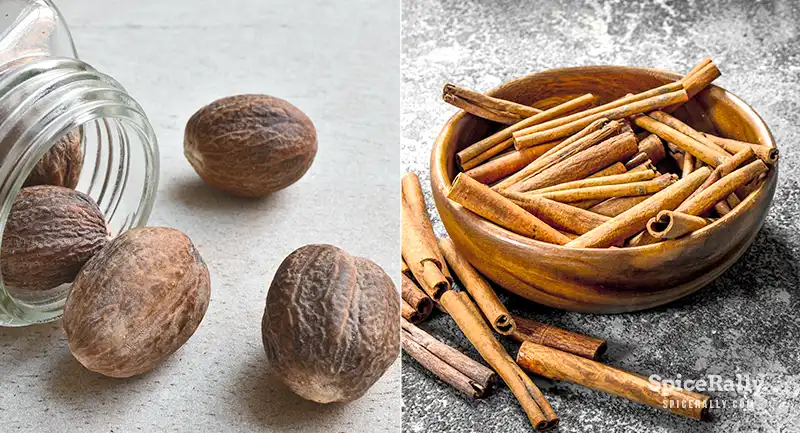
More Insights To The Difference Between Nutmeg And Cinnamon
As we made clear through the table above, nutmeg and cinnamon are two widely used pantry staples with their own characteristic properties to flavor and aromatize dishes. Both of them have a potent flavor, but still, they feature significantly differently in our foods.
However, nutmeg and cinnamon are closely associated when it comes to sweet preparations, beverages, and meat dishes. They are often used together, but the flavor of cinnamon, especially cassia cinnamon, tends to overshadow the flavor of nutmeg. On the other hand, nutmeg is more potent in terms of fragrance and could often overpower the aroma of cinnamon when used together.
Another significant difference is the way both of these spices are used in cooking. While cinnamon can be used as whole quills, nutmeg hardly goes in whole. Therefore, sometimes, when these two spices are used together, particularly when cinnamon as quills and nutmeg as a powder, we will be likely to savor nutmeg more prominently.
Can We Use Cinnamon In Place Of Nutmeg And Vice Versa?
Ceylon cinnamon and cassia flavor profiles differ, but neither is an ideal replacement for nutmeg. You will notice that many recipes include both nutmeg and cinnamon. And this signifies that while the flavor profiles are complementary, each spice conveys something to dishes that the other cannot.
In spite of that, the point that they are both used in the same dishes indicates that you can often counteract the absence of one with the other. Ceylon cinnamon has a more faded note that is not as dynamically intense as cassia cinnamon.
Hence, Ceylon cinnamon can sometimes be a potential substitute for dishes that call for nutmeg. Likewise, nutmeg might be more effective in replacing Ceylon cinnamon than as a cassia cinnamon substitute.

